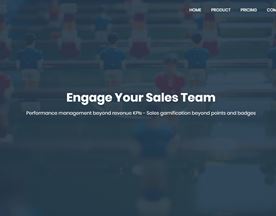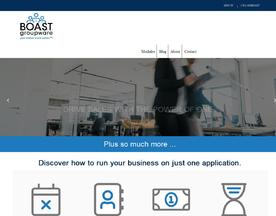If you’re in the world of sales or have been exploring various sales methodologies, you’ve likely come across the term “MedDIC.”
But what exactly is MedDIC, and how can it help you boost your sales efforts? In this comprehensive guide, we’ll delve into the MedDIC sales methodology, its key principles, and how you can apply it to achieve success in your sales endeavors.

Sales is a dynamic, competitive landscape and ever-evolving field where success hinges on your ability to understand your customers, identify their needs, and provide them with solutions that genuinely add value to their businesses. In this pursuit, various sales methodologies have emerged over the years, each with its unique approach and strategies. One such methodology that has gained prominence in recent years is MedDIC.
In this blog post, we will explore the MedDIC sales process in depth, breaking down its components and explaining how it can revolutionize your sales game. Whether you are a seasoned sales professional or just starting your journey in sales, understanding MedDIC can be a game-changer for your career.
What is MedDIC Sales Methodology? MedDIC stands for Metrics, Economic Buyer, Decision Criteria, Decision Process, Identify Pain, and Champion.
It is a comprehensive and structured approach to sales that guides you through every stage of the sales process, from prospecting to closing the deal. MedDIC provides a framework to identify, qualify, and win opportunities effectively.
Now, let’s dive deeper into each component of the MedDIC methodology:

Metrics
Metrics play a pivotal role in the MedDIC sales methodology as they are the foundation upon which you can build a successful sales strategy. Understanding and aligning with your prospect’s metrics is the first step toward effectively implementing MedDIC and increasing your chances of closing a deal. In this section, we’ll dive deeper into the importance of metrics, how to identify them, and how to leverage them to your advantage.
The Significance of Metrics
Metrics, in the context of MedDIC, refer to the quantifiable measures that define success for your prospect or client. They are the key performance indicators (KPIs) and benchmarks that matter most to the organization you’re targeting. Metrics can encompass a wide range of areas, including financial health, operational efficiency, customer satisfaction, and more.
Understanding and prioritizing your prospect’s metrics is essential for several reasons:
Relevance: Metrics are specific to each prospect and industry. By identifying and aligning with their metrics, you demonstrate that you understand their business and can offer a relevant solution.
Value Proposition: Metrics help you craft a compelling value proposition. When you can clearly articulate how your product or service positively impacts the prospect’s metrics, you become more persuasive.
Credibility: Addressing your prospect’s metrics builds credibility. It shows that you are serious about addressing their unique challenges and are not offering a generic, one-size-fits-all solution.
Decision Criteria: Metrics often influence the decision making process your prospect uses to evaluate potential solutions. By addressing your prospect’s decision criteria through these metrics, you position yourself favorably in their decision-making process.
Identifying Your Prospect’s Metrics
To effectively apply the MedDIC methodology, you must first identify the specific metrics that matter most to your prospect. Here’s how you can go about it:
Research: Begin sales lead qualification process by conducting thorough research on the prospect’s industry and organization. Look for annual reports, financial statements, press releases, and any publicly available information that may shed light on their key metrics.
Ask the Right Questions: During your initial conversations with the prospect or potential customers, ask open-ended questions that encourage them to share their challenges and objectives. For example, you could inquire about their top priorities, areas of improvement, or recent successes.
Listen Actively: Actively listen to what your prospect is saying. Pay attention to the metrics they mention or emphasize. They may directly state their KPIs or express concerns related to specific metrics.
Engage with Stakeholders: Identify and engage with key stakeholders within the organization, including decision-makers and influencers. Different stakeholders may have varying perspectives on what metrics are most crucial, so gather insights from multiple sources.
Leveraging Metrics to Your Advantage
Once you have a clear understanding of your prospect’s metrics, it’s time to leverage this knowledge to your advantage:
Customize Your Pitch: Tailor your sales pitch to highlight how your solution aligns with and positively impacts the prospect’s key metrics. Use real-world examples and case studies to illustrate your point.
Quantify Benefits: Whenever possible, quantify the economic benefits of your solution in terms of the prospect’s metrics. For example, if your product can increase revenue, reduce costs, or improve efficiency, provide specific figures to support your claims.
Address Concerns: Anticipate and address any concerns or objections related to metrics. Be prepared to explain how your solution mitigates risks and ensures positive outcomes in these areas.
Track Progress: Throughout the sales process, track and communicate how your solution is expected to impact the prospect’s metrics. Create a roadmap or plan that outlines the milestones and improvements they can expect to see.
Offer Proof: Share success stories

Economic Buyer
In the world of sales, identifying and engaging with the right decision-makers within a prospect’s organization can make or break a deal. Among these decision-makers, the “Economic Buyer” holds a particularly critical role. In the MedDIC sales methodology, recognizing and building a relationship with the Economic Buyer is paramount to success.
In this section, we’ll explore the significance of the Economic Buyer, how to identify them, and strategies for effectively engaging with this key stakeholder.
The Role of the Economic Buyer
The Economic Buyer is the individual within a prospect’s organization who possesses the authority to make financial decisions. They are the ultimate gatekeeper when it comes to allocating budget and resources.
In the context of the MedDIC methodology, understanding and engaging with the Economic Buyer is essential for several reasons:
Budget Control: The Economic Buyer controls the purse strings. They have the power to allocate funds and approve expenditures, making them a crucial figure in the sales process.
Final Decision-Making: While there may be multiple decision-makers and influencers within the organization, the Economic Buyer has the final say in whether or not to proceed with a full purchase decision.
Risk Mitigation: Engaging with the Economic Buyer early on helps mitigate the risk of your deal getting stalled or derailed later in the sales process due to budget constraints or financial objections.
Strategic Alignment: The Economic Buyer’s priorities and objectives often align with the organization’s financial goals. Demonstrating how your solution contributes to these objectives can significantly increase your chances of success.
Identifying the Economic Buyer
To effectively apply the MedDIC methodology, you need to identify the Economic Buyer within your prospect’s organization.
Here are steps to help you pinpoint this critical decision-maker:
Ask Directly: In your early conversations with the prospect, ask them directly about their organization’s decision-making structure. Inquire about who has the final authority when it comes to financial decisions.
Consult Your Network: Leverage your network, both within and outside the prospect’s organization, to gather information about key stakeholders. Contacts in similar industries or roles may provide valuable insights.
Research Online: Explore the prospect’s website, LinkedIn profiles, and other online resources to identify individuals in high-ranking positions who may hold financial decision-making authority.
Engage in Discovery: As you engage in the discovery phase of your sales process, inquire about the prospect’s budget and financial considerations. This can help reveal the Economic Buyer’s identity.
Listen for Cues: Pay close attention to any cues or references made by your contacts within the organization. They may mention the Economic Buyer or allude to their role in financial matters.
Strategies for Engaging with the Economic Buyer
Once you’ve identified the Economic Buyer, it’s crucial to engage with them effectively.
Here are strategies to help you build a productive relationship with this key stakeholder:
Understand Their Priorities: Take the time to understand the Economic Buyer’s priorities, objectives, and challenges. What financial goals does their organization aim to achieve, and how can your solution contribute to these goals?
Articulate Value Clearly: When presenting your solution, clearly articulate how it aligns with the Economic Buyer’s financial objectives. Use concrete examples and ROI calculations to demonstrate the value your product or service brings.
Build Trust: Building trust is essential when dealing with the Economic Buyer. Be transparent, honest, and responsive to their inquiries and concerns. Provide data and evidence to support your claims.
Engage Early: Don’t wait until the later stages of your sales process to engage with the Economic Buyer. Introduce yourself and your solution as early as possible, even if your initial contact is with other stakeholders.
Address Financial Objections: Be prepared to address any financial objections or concerns raised by the Economic Buyer. Offer solutions or alternatives that demonstrate flexibility while still aligning with their financial constraints.
Maintain Consistent Communication: Keep the Economic Buyer informed and engaged throughout the sales cycle. Provide regular updates on progress, milestones, and the expected impact of your solution on their organization’s finances.
Leverage Internal Champions: If you’ve identified an internal Champion within the organization, collaborate with them to gain access to the Economic Buyer and garner their support in advocating for your solution.
In summary, the Economic Buyer is a pivotal figure in the MedDIC sales methodology, and understanding their role and engaging effectively is crucial for sales success.
By identifying the Economic Buyer early in paper process, tailoring your approach to their financial priorities, and building a trusting relationship, you can increase your chances of securing their support and ultimately closing the deal.

Decision Criteria
Decision Criteria refers to the specific factors that your prospect considers when making a purchasing decision.
It’s crucial to understand what influences their choices and how your solution aligns with these criteria. MedDIC encourages you to thoroughly assess and address each decision criterion to increase your chances of success.
Key Points:
- Identify the key factors that drive your prospect’s decision-making.
- Customize your sales approach to highlight how your solution fulfills these criteria.
- Be prepared to answer questions and objections related to decision making process.
Decision Process
The Decision Process outlines the steps and stages your prospect goes through when making a buying decision. In MedDIC, understanding this process is vital because it helps you anticipate and navigate potential roadblocks or objections that may arise along the way.
By aligning your sales efforts with the Decision Process, you can streamline the sales cycle.
Key Points:
- Map out your prospect’s Decision Process.
- Identify key decision-makers and influencers involved at each stage.
- Tailor your communication and actions to align with the Decision Process.
Identify Pain
Identifying Pain is a critical aspect of MedDIC. It involves uncovering the specific challenges, problems, or pain points your prospect is facing. By empathetically understanding their pain, you can position your solution as the remedy they need.
MedDIC teaches you to dig deep, ask probing questions, and actively listen to your prospect to uncover their pain.
Key Points:
- Effective sales begin by identifying and empathizing with your prospect’s pain.
- Use open-ended questions to encourage your prospect to share their challenges.
- Connect your solution to relieving their pain points.

Champion
In the intricate dance of sales, having an internal advocate can make all the difference between sealing the deal and losing out to the competition. This advocate is known as the “Champion,” and they play a pivotal role in the MedDIC sales methodology.
In this section, we’ll delve into the significance of a Champion, how to identify one, and strategies for cultivating a strong relationship with this key stakeholder.
The Significance of a Champion
A Champion is an individual within your prospect’s organization who enthusiastically supports your solution and actively works to advance your cause. They serve as your internal advocate, helping navigate the complexities of the decision-making and approval process, overcoming objections, and promoting your solution to other stakeholders.
In the context of the MedDIC methodology, Champions are vital for several reasons:
Influence: Champions often wield significant influence within their organization, making them powerful allies in your sales efforts. They can help sway opinions and decisions in your favor.
Insider Knowledge: Champions possess a deep understanding of their organization’s dynamics, pain points, and objectives. This insight is invaluable for tailoring your solution and sales approach effectively.
Objection Handling: Champions can anticipate objections and counterarguments from other stakeholders. They provide you with valuable guidance on how to address these concerns convincingly.
Stakeholder Engagement: They can help you identify and engage with other key decision-makers and influencers within the organization, ensuring your solution is seen and evaluated by the right people.
Advocacy: Champions actively promote your solution even when you’re not present, which can accelerate the sales process and generate positive word-of-mouth referrals.
Identifying Your Champion
Identifying a Champion early in the sales process is essential for the successful application of the MedDIC methodology.
Here are strategies to help you pinpoint and engage with this crucial stakeholder:
Listen and Observe: During your interactions in person training and with the prospect, pay attention to individuals who show enthusiasm for your solution, ask insightful questions, or demonstrate a deep understanding of their organization’s needs.
Ask Directly: Inquire about the presence of an internal advocate or Champion within the software company or organization. Ask contacts within the company if there is someone who strongly supports your solution.
Consult Your Network: Leverage your professional network, both within and outside the prospect’s organization, to gather insights on potential Champions. Contacts with sales professionals with connections in similar industries may provide valuable information.
Look for Enthusiasm: Identify individuals who display genuine excitement about the potential impact of your solution on their organization. These individuals are more likely to become Champions.
Review Organizational Structure: Examine the organizational structure of the prospect’s company to identify roles or positions that typically align with Champion responsibilities, such as department heads or project managers.
Ask for Referrals: If you’ve identified a potential Champion, ask them for referrals to other stakeholders who might share their enthusiasm and support your solution.
Strategies for Cultivating a Champion
Once you’ve identified a Champion, it’s crucial to cultivate a strong and productive relationship with them.
Here are strategies to help you do just that:
Understand Their Motivations: Take the time to understand what motivates your Champion personally and professionally. What goals or objectives are they aiming to achieve by supporting your solution?
Provide Value: Continuously demonstrate the value your solution brings to their organization. Show how it aligns with their pain points, objectives, and the metrics that matter most to them.
Regular Updates: Keep your Champion informed about the progress of your sales efforts. Share updates, milestones, and any positive developments that reinforce their support for your solution.
Address Their Concerns: Actively listen to your Champion’s feedback and concerns. Address any issues promptly and work collaboratively to find solutions that meet their needs.
Facilitate Internal Buy-In: Enlist your Champion’s assistance in gaining buy-in from other stakeholders. They can help you set up meetings, make introductions, and provide endorsements that carry weight.
Celebrate Successes: When your solution delivers positive results, celebrate these successes with your Champion and their entire team. Recognizing and acknowledging their support fosters goodwill.
Stay Connected: Maintain an ongoing relationship with your Champion even after the deal is closed. Continue to nurture this relationship, as they may be instrumental in securing repeat business or referrals.
In conclusion, the Champion is a linchpin in the MedDIC sales methodology, and their support can significantly boost your chances of success.
By identifying a Champion early, understanding their motivations, and nurturing the relationship, you can harness their influence and advocacy to navigate complex sales processes and ultimately secure more deals.

Software Tools for Implementing MedDIC
To successfully implement the MedDIC sales methodology, you can leverage various software tools existing systems that streamline your sales process, help you gather crucial information, and enhance your overall efficiency.
Here are a few recommended tools:
HubSpot CRM –
HubSpot CRM is an excellent choice for managing your sales pipeline, tracking customer interactions, and automating various sales tasks. It provides a central hub for managing leads, contacts, and closing deals, making it easier to apply MedDIC principles.
Why it’s useful: HubSpot CRM offers a user-friendly interface, integration with email and other tools, and robust reporting capabilities, all of which align with the MedDIC methodology’s principles of understanding customer metrics and streamlining the sales process.
LinkedIn Sales Navigator –
LinkedIn Sales Navigator is a powerful tool for prospecting and building relationships with potential clients. It enables you to find and connect with decision-makers in your target industries and engage with them effectively.
Why it’s useful: LinkedIn Sales Navigator assists in identifying Economic Buyers, Champions, and other key stakeholders within your target organizations. It also provides insights into decision-makers’ activities and interests, helping you tailor your outreach.
Gong –
Gong is a conversation analytics platform that records and analyzes sales calls and meetings. It offers valuable insights into customer interactions, allowing you to understand decision criteria, pain points, and objections more deeply.
Why it’s useful: Gong helps you gain a better understanding of your prospect’s pain points, enabling you to fine-tune your approach and messaging. It also provides actionable feedback to improve your sales conversations.
Chorus.ai –
Chorus.ai is another conversation intelligence platform that provides real-time insights and coaching for sales teams. It helps you capture and analyze conversations, uncovering valuable information to align with the MedDIC methodology.
Why it’s useful: Chorus.ai helps you identify pain points and decision making process during sales conversations, ensuring that you address your prospect’s needs effectively. It also offers coaching and feedback for both sales managers and sales reps themselves.
Tableau –
Tableau is a data visualization tool that can help you create interactive and informative dashboards. By visualizing your customer’s metrics and data, you can better understand their needs and present your solution effectively.
Why it’s useful: Tableau enables you to visualize and present metrics to your prospects, showcasing how your solution can impact their key performance indicators (KPIs). It aligns with the MedDIC principle of understanding customer metrics.
Incorporating these software tools into your sales teams can significantly enhance your ability to apply the MedDIC methodology effectively.
They offer features and functionalities that align with the key components of MedDIC, helping you identify, qualify, and close opportunities more efficiently.

Frequently Asked Questions (FAQ)
1. What is the primary goal of the MedDIC sales methodology?
The primary goal of the MedDIC sales methodology is to provide sales leaders with a structured approach to understanding and winning opportunities by focusing on Metrics, Economic Buyer, Decision Criteria, Decision Process, Identify Pain, and Champion.
2. How does MedDIC differ from other sales methodologies?
MedDIC stands out by its comprehensive approach, which emphasizes understanding the economic impact on the prospect’s business, identifying key technical criteria, and building relationships with internal champions.
3. Can MedDIC be applied to both B2B and B2C sales?
While MedDIC is primarily designed for B2B (Business-to-Business) sales, some of its principles, such as identifying pain points and understanding decision making process, can be adapted for B2C (Business-to-Consumer) sales in a modified form.
4. What are some common challenges in implementing the MedDIC methodology?
Common challenges in implementing MedDIC include correctly identifying the Economic Buyer, effectively uncovering and addressing pain points, and navigating complex Decision Processes within prospect organizations.
5. Are there specific industries where MedDIC is more effective?
MedDIC is a versatile methodology that can be applied across various industries. However, it tends to be particularly effective in industries with longer sales cycles and complex decision-making processes, such as healthcare, technology, and finance.
6. How can I identify and nurture a Champion within a prospect organization?
To identify and nurture a Champion, focus on building strong relationships, understanding their motivations and goals, and providing them with the support and information they need to advocate for your solution internally.
7. Is there a specific order in which I should address the components of MedDIC?
While MedDIC provides a structured sales framework, the order in which you address its components can vary based on your prospect’s specific situation. It’s essential to adapt your approach based on the prospect’s needs and the sales context.
8. Can MedDIC help improve my sales team’s collaboration and communication?
Yes, MedDIC sales promotes collaboration and communication within sales teams by emphasizing the importance of understanding and documenting key information about prospects, which can be shared among sales team members to enhance their collective efforts.
9. How can I leverage software tools to implement the MedDIC methodology effectively?
You can leverage software tools such as HubSpot CRM, LinkedIn Sales Navigator, Gong, Chorus.ai, and Tableau to streamline your sales process, gather critical information, and improve your understanding of customer metrics and pain points.
10. What are some common pitfalls to avoid when applying MedDIC?
Common pitfalls to avoid in MedDIC include making assumptions about the Economic Buyer, not thoroughly identifying pain points in right prospects, failing to adapt to the prospect’s Decision Process, and neglecting to maintain relationships with Champions.

Conclusion
In the fast-paced and competitive world of sales stategy, having a structured methodology like MedDIC in your arsenal can make all the difference in your success. By understanding and applying the key principles of Metrics, Economic Buyer, Decision Criteria, Decision Process, Identify Pain, and Champion, you can significantly improve your ability to identify, and qualify prospects, and win opportunities.
Remember that implementing MedDIC is not a one-size-fits-all approach. It requires adaptability, active listening, and a deep understanding of your prospect’s unique needs and challenges. Additionally, leveraging software tools can streamline your efforts and enhance your effectiveness in implementing the MedDIC methodology.
In closing, MedDIC empowers you to approach your sales and marketing teams with a systematic and strategic mindset, ultimately leading to more successful outcomes for both you and your customers. So, go ahead and incorporate MedDIC into your sales team and toolkit, and watch your sales funnel to new heights!















